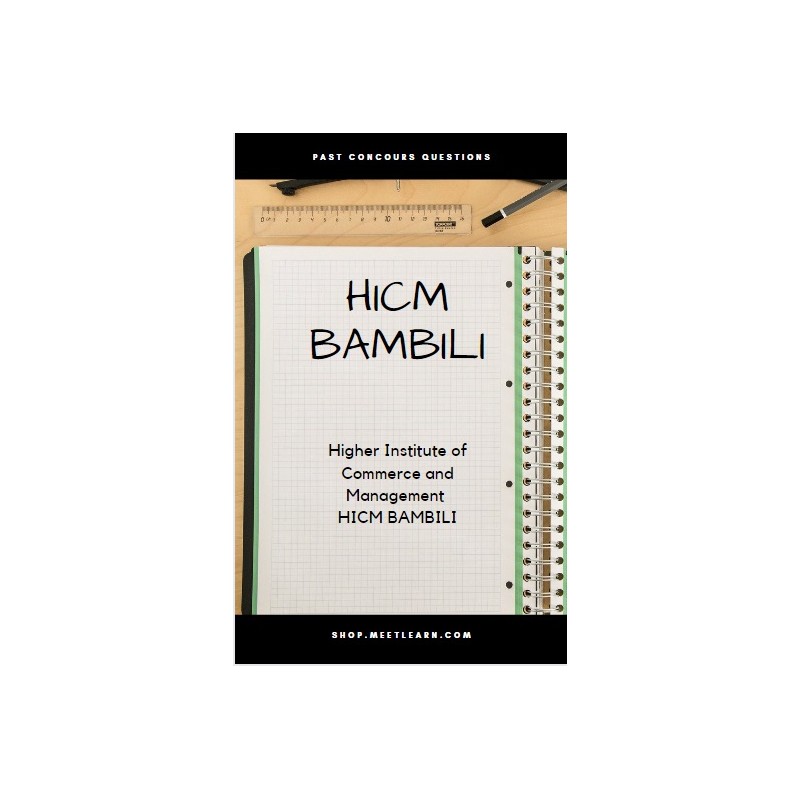2015 COMPETITIVE ENTRANCE EXAMINATION
The University of Bamenda
Higher institute of Commerce and Management
Competitive Entrance Examination
Academic Year 2015/2016
ECONOMICS QUESTIONS 50 MARKS
INSTRUCTIONS: write the question number and ONLY the letter that corresponds to the correct answer OR either TRUE or FALSE where applicable
1. Large minimum efficient scale of plant combined with limited market demand may led to:
A. natural monopoly. B. patent monopoly.
C. government franchise monopoly. D. shared monopoly.
2. The non-discriminating pure monopolist’s demand curve:
A. is the industry demand curve.
B. shows a direct or positive relationship between price and quantity demanded.
C. tends to be inelastic at high prices and elastic at low prices.
D. is identical to its marginal revenue curve.
3. Because of the free-rider problem:
A. the market demand for a public good is overstated.
B. the market demand for a public good is nonexistent or unstated.
C. government has increasingly yielded to the private sector in producing public goods.
D. public goods often create moral hazard and adverse selection problems.
4. In the short run a purely competitive firm will always make an economic profit if:
A. P = ATC. B. P > AVC. C. P = MC D. P > ATC
5. A firm finds that at its MR = MC output, its TC = 1,000, TVC = 800, TFC = 200, and total revenue is 900. This firm should:
A. shut down in the short run.
B. produce because the resulting loss is less than its TFC.
C. produce because it will realize an economic profit.
D. liquidate its assets and go out of business.
6. If MUa/Pa = 100/$35 = MUb/Pb = 300/? = MUc/Pc = 400/?, the prices of products b and c in consumer equilibrium:
A. cannot be determined from the information given.
B. are $105 and $140 respectively.
C. are $105 and $175 respectively.
D. are $100 and $200 respectively.
7. If real GDP in a particular year is 80 billion and nominal GDP is 240 billion, the GDP price index for that year is:
A. 100. B. 200 C. 240 D. 300
8. The size of the MPC is assumed to be:
A. Less than zero. B. greater than one.
C. greater than zero, but less than one D. two or more
9. If the equation for the consumption schedule is C = 20 + 0.8Y, where C is consumption and Y is disposable income, then the average propensity to consume is 1 when disposable income is:
Note: This Book is a PDF File and so is available online only. Once your Payment is made, you will receive an automatic download link into your email address. Just click on "Add to Cart" and follow the instructions that follow to purchase this booklet.



 Security policy (edit with Customer reassurance module)
Security policy (edit with Customer reassurance module)
 Delivery policy (edit with Customer reassurance module)
Delivery policy (edit with Customer reassurance module)
 Return policy (edit with Customer reassurance module)
Return policy (edit with Customer reassurance module)